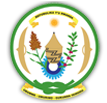Kigali 18th October, 2016-Rwanda’s Vision 2020 intends a proportion of at least 70 % of households living in rural areas to settle in integrated viable settlements and these planned settlements offer economic opportunities, favor rational land use and management and accelerate servicing with basic social economic and physical infrastructures in rural areas. One of the challenges that the Government intends to overcome is to assist households living in high risk zone from severely land slides and flooding.Reshaping rural settlement in Rwanda through adapting an all inclusive rural settlement model that centers on providing access to clean water, electricity, health facilities, common marketplace, smart classrooms, improved road networks, common cowshed, embracing better agricultural practices among other things can be traced to one of the resolutions passed during the Government of Rwanda’s Akagera retreat in 2007.
This resolution called for finding a long lasting solution to Rwanda’s rural settlement challenge so as to spur socio-economic development of Rwandans living in rural areas. As a result, an Integrated Development Approach Model Village (IDP) was deemed to be one of the substantial propositions to provide answer to rural settlement. Given the development that has emerged since then, it is evident that IDP model villages is one of the many home-grown solutions that has provided affordable solutions to the human settlement challenge in Rwanda through use of an unconventional approach.
This model was first tested in the Nyagatovu and Kitazigurwa IDP model villages in the Eastern Province, where this approach turned these two areas into villages of excellence where even delegations from countries in Africa and from across the globe frequently visit to learn how this approach is a means to achieving sustainable socio-economic development. The model provides the environment to transforming the livelihood of the rural Rwandan population through the provision of the basic services much needed to spur social satisfaction and economic empowerment.
Rwandans that were previously living in isolation and in high risk zones today can enjoy a decent living due to not being victims of natural hazards such as landslides, or not having to live near landfills which threat healthy dwelling. Their children don’t have to travel long distances any more going to school because through this approach schools and health centers are located within proximity. This would have not been possible without the Rwandan visionary leadership that puts its citizens first.
With the contributions of the rural sector to the national economy, championing rural progress through various Government programs such as in the development of IDP Model Villages, rural Rwanda has become a priority of the Government of Rwanda and development partners. The Government’s target is to have 70% of the rural population living in well planned and well serviced villages by the year 2018.
In addition, improved connectivity and ease in transportation and communication that is part of this model is a means to facilitate trade from one community to another, and to help increase household incomes. The Government’s embracement of the goal to consistently develop IDP model villages also constitutes a unique solution to efficient use of land by the population due to the advantage that come with this model of human settlement. This year’s target is to scale up these activities across all the 30 Districts in Rwanda, and by 2020 two model villages are envisioned to be found in each District.
With all Districts implementing the IDP model villages, the livelihood of people is set to improve, combined with land consolidation practices for an increased yield from valuable arable land, while championing improved housing in rural areas that have access to amenities and basic infrastructure.
The identification and development of suitable sites is an essential element for the implementation process, with the aim to ensure access to water sources and social services that include schools, health centers, roads, markets, side by side with fertile land. This process involves human settlement plans based on the topographical conditions, thanks to Rwanda Housing Authority (RHA) through the Ministry of Infrastructure, Ministry of Local Government, Ministry of Defense and other Government agencies spearheading the activities to establish a viable solution.
The benefits that come with settling in IDP model villages lead to the creation of opportunities for developing secondary and tertiary sector activities and the development of innovations. The joint teams will also assess how to establish a sensitive and resource-protecting differentiation of rural settlement hierarchy, to make way for bundled growth of some settlements into trading centers and even towns, while others will be expected to remain smaller rural settlements.

 ENGL
ENGL KINY
KINY